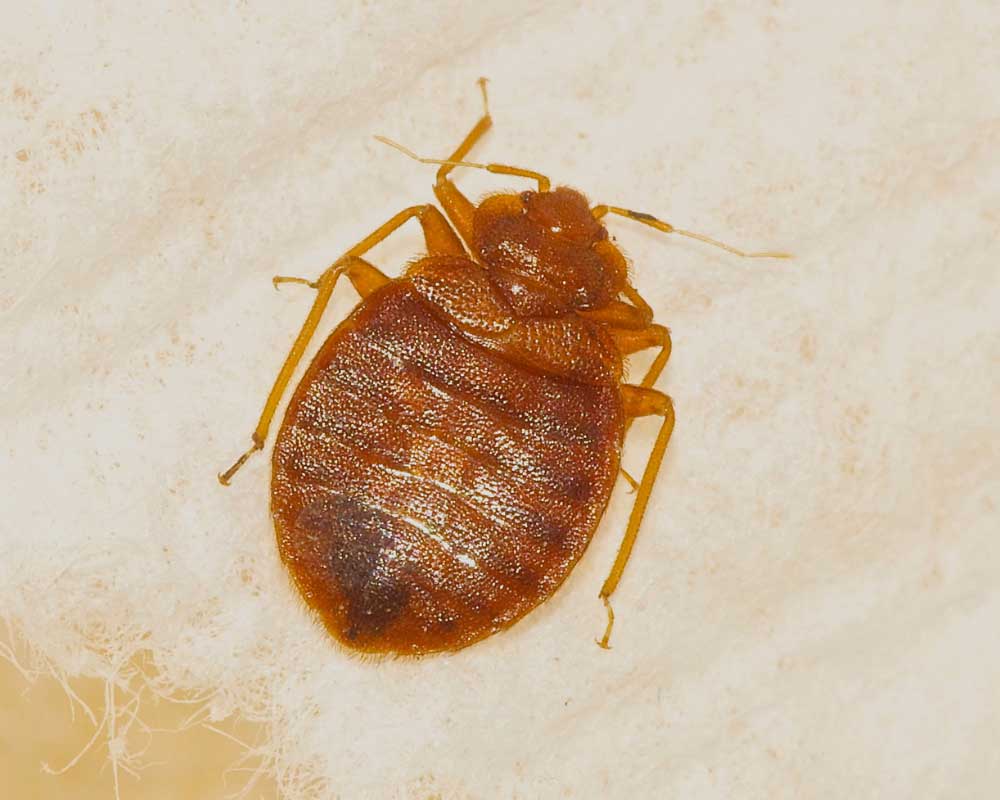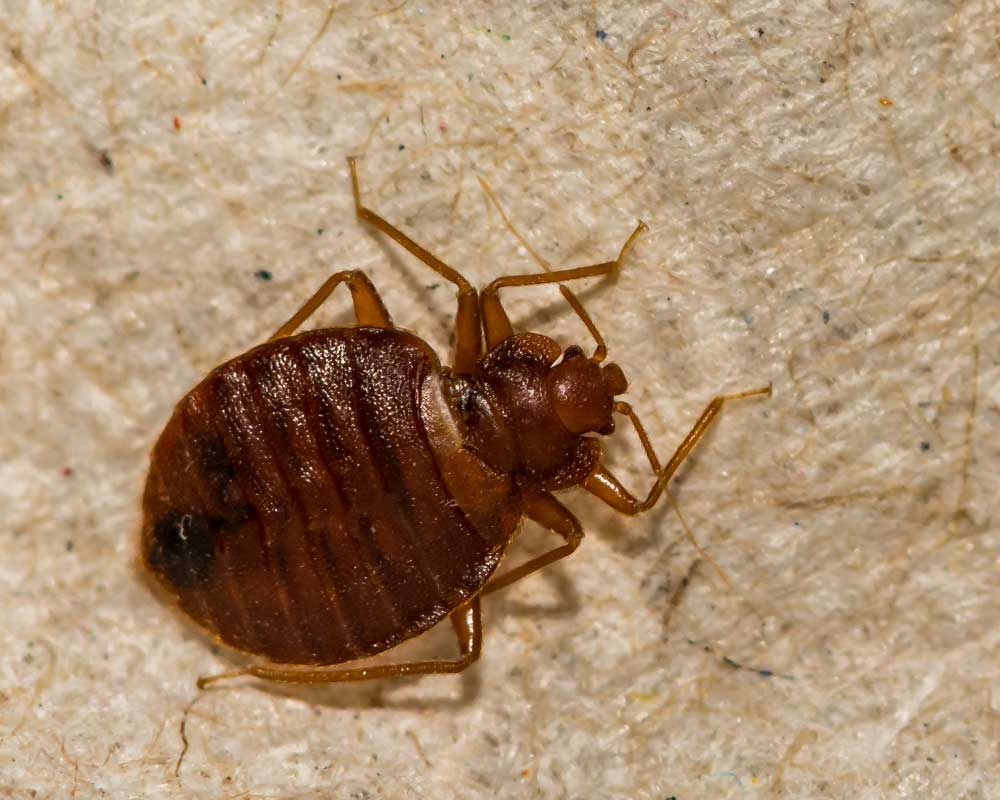Bed Bug Control Services
Give Defender Pest Control a call today, we can provide a prompt and guaranteed solution to any bed bug infestation!
Bed Bug Control Wirral
Bed bugs are widely considered to be one of the most detested and feared pests in the UK. Perhaps you have found some unusual reddish brown spots in your bed or woken up from a lovely nights sleep covered in bites. If this sounds familiar then give Defender Pest Control a call today, we can provide a prompt and guaranteed solution to any bed bug infestation!
We cover the Wirral and the North West.

Can’t rate these guys high enough! Fabulous service from both Tom and Liam. Responded quickly to initial request and work was guaranteed if the problem persisted. They came back out as promised and sorted it. Reliable and trustworthy. Really thorough and professional service.
- Marion

Absolutely would recommend, went above and beyond all expectations, even did an extra visit to be sure at no extra charge, completed the job, were respectful, friendly and so easy to deal with, I would not hesitate to use again if needed.
- Loraine Kenneavy

Pest control: I would definitely recommend Defender Pest Control. Tom did an excellent job, nothing was too much trouble and he was at all times polite and helpful. If I should require his services again I would not hestitate to call him.
Signs of Bed Bug Infestation
Due to their nocturnal nature and fear of being detected bed bugs are rarely seen, it usually becomes apparent that you have a bed bug problem when bites appear on the body. However, they are some other tell-tale signs that may indicate your property has been invaded by these little critters.
- Irritating red bites - they will typically be in a row on areas such as neck, shoulders, back, legs and arm.
- Small reddish brown faecal spots around 1mm wide. They can look like ink spots and may be found on the bed frame, or bottom of the mattress.
- A sweet, unpleasant, sickly smell.
- Blood smears on linen or headboard.
- You may be able to see shedded skins, pale white eggs, empty eggshells, and in some cases live adult bugs.

Bed Bugs in Business
As we have already established bed bugs can set up camp in any property and in many different locations not just a comfy bed. Bed bugs, therefore, can pose a threat to a whole host of businesses and the stigma attached with their presence can majorly threaten the future of your business.
Simply call us today for a free site survey and quotation with our 24 hour response guarantee!
Reputational Damage
If a customer or client spots or is bitten by bed bugs on your property it can very quickly lead to your brand being damaged and a severe loss of earnings.
Types of Businesses Affected
The most common businesses effected by bed bugs still remain hotels, hostels and bed and breakfasts.
But any place of business that can provide bed bugs with favourable conditions and has a high volume of human traffic can be just as susceptible to an infestation.
As with any pest, if bed bugs are found or suspected in your business early detection is key so your business can experience as little disruption as possible.
Hospitality Businesses
If you have a hospitality business a bed bug infestation can be extremely costly.
Not only is the replacement of furniture, mattresses, towels and bedding expensive your reputation can be dramatically affected if customers are bitten.
There are some lawyers who specialise in bed bug compensation, so having these critters at large in your business or inadequate measures in place to deter them can be detrimental!
Discreet Professional Services
Here, at Defender Pest Control we offer commercial clients a discreet, guaranteed and prompt resolution for any bed bug infestation you may be experiencing.
It can be difficult in hospitality businesses to completely eradicate any chances of a future bed bug infestation, as always, the best solution is early detection.
We can provide you with regular site visits so at the first sign of activity an outbreak can be contained and controlled before the infestation grows out of control.
Spotting & Preventing Bed Bugs
Sadly, a bed bug infestation is just a case of bad luck. It can be as simple as them attaching themselves to your clothes or luggage as you travel around or them moving from room to room in a multi-occupancy building. There are, however, steps you can take to lower your chances of having a run in with these pests.
In Business
Alerting and training your staff of bed bug characteristics and infestation signs can help them detect a problem before it becomes out of control, and before guests spot it first!
- Before staying in new accommodation check for signs of bed bugs.
- Do not put your luggage or bags straight on to your bed after travelling.
- If you buy second-hand furniture have a thorough check for any signs of bed bugs before bringing it inside your property.
- Wash and dry your clothes at high temperatures.
- Declutter your space so they have less places to hide.
- Regular tidying of your bed and the floors surrounding it.
- Regular vacuuming of your property.
- Regularly washing your bedding.
Preparing for Bed Bug Treatments
There are certain tasks we need you to do before we visit your home or business for a bedbug treatment. This is so your treatment can be as effective as possible.
- Remove all bed sheets from each bed
- Take down curtains and nets
- Wash all bed sheets, curtains and clothing at 60 degrees and then put them in the dryer on a hot setting for 30 minutes to kill the bugs, or have these items dry cleaned. Then store these items in sealed bags away from the areas being treated until after the treatment is completed.
- Empty bedside cabinets and drawers under beds
- Remove all items from the floors and under beds
- A thorough clean of the room using the crevice tool on your hoover and focus on hoovering the edges of the rooms.
- Pull all furniture away from the wall by 1 foot if possible to enable a thorough treatment of the edges of the room
After Bed Bug TReatment
Failure to follow the guidelines below will compromise the effectiveness of the treatment.
You Must:
1. Continue using the beds in the rooms where the bedbugs are. This will attract the bugs out of hiding and onto the treated areas. If you do not use the beds, the bugs will not be killed.
2. Deep clean the bedrooms before our second visit.
You Must Not:
1. Enter your home for at least 4 hours afterwards because the insecticide spray can be harmful to people and pets
2. Vacuum the carpets for at least 6 days to allow the spray time to work.
More Information About Bed Bugs
Below is some additional information on spotting bed bugs, their breeding cycle, and infestations.
Spotting Bed Bugs
Bed bugs are a small brownish-red flattened oval shape, and they measure between 4-6mm in length- they look similar to an apple seed. Bed bugs are a nocturnal, blood-sucking arthropod and they feed on the blood of humans and animals, they most commonly feed of a night- hence the phrase ‘night night, don’t let the bed bugs bite!’
About Bed Bug Infestations
Bed bugs can set up home in any property, but they are more common in a densely populated area, buildings with a heavy turnover of different residents (hotels, hostels etc), and buildings with multiple occupancy.
The ideal temperature for bed bugs to thrive in is between 21°-32°C, but they can survive in temperatures as low as 0 and as high as 49°C. This is why bed bugs are more common in warmer months.
Despite their name, bed bugs can infest many areas of a property such as crevices in the surrounding of furniture, under loose wallpaper, in plug sockets, behind pictures and behind skirting boards.
Bed Bug Life Cycle
Bed bugs have an interesting life cycle and once they have attached themselves to a hosts item, whether that’s clothing, luggage, or furniture they become prolific breeders which is why rapid action is required when an infestation is suspected.
Alike to fleas, bed bugs have a lifecycle that is described as incomplete metamorphosis, a process which can take between 6-10 months. They usually live for 10 months. There are seven stages to their life cycle:
- Egg
- Immature Nymph Stages
- Adult
Bed bugs have an interesting life cycle and once they have attached themselves to a hosts item, whether that’s clothing, luggage, or furniture they become prolific breeders which is why rapid action is required when an infestation is suspected.
Alike to fleas, bed bugs have a lifecycle that is described as incomplete metamorphosis, a process which can take between 6-10 months. They usually live for 10 months. There are seven stages to their life cycle:
- Female bed bugs lay between 200-500 eggs over the course of 2 months in batches of between 10-50. If the conditions are right these eggs can hatch within a week and their sticky exterior allows them to attach to items of furniture/ fittings in a clustered formation.
- Newly hatched nymphs need to shed 5 times before they can reach full adult maturity. A blood meal is required at each stage of shedding- if there is a ready supply of blood, they could reach adulthood in as little as a month and be able to reproduce themselves. Fast action is crucial to stop an infestation growing out of control!
- Bed bugs can be in an inactive state for a prolonged period, and they can survive for weeks, even months without feeding. They respond to warmth and carbon dioxide, so once CO2 or other biological signatures are detected they can quickly wake from this inactive state and begin feeding.

